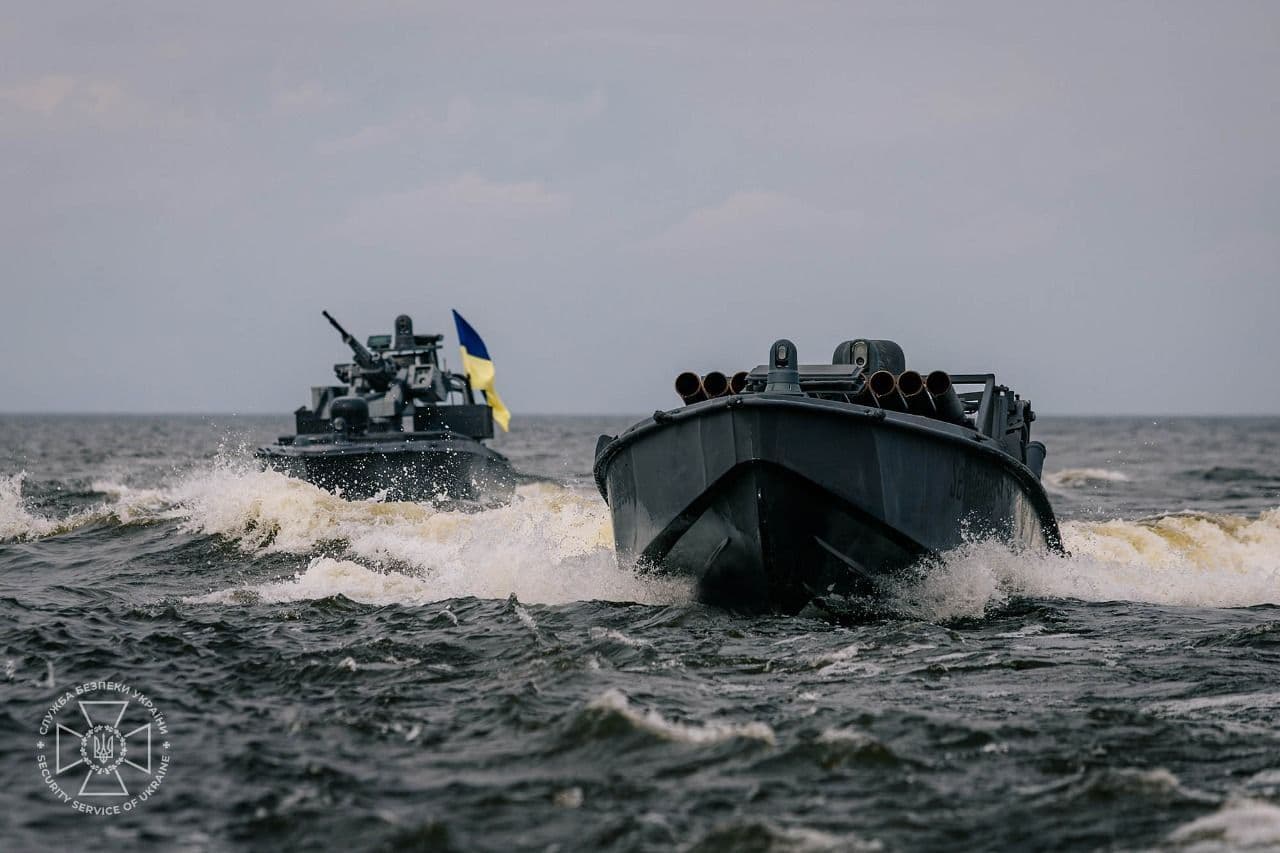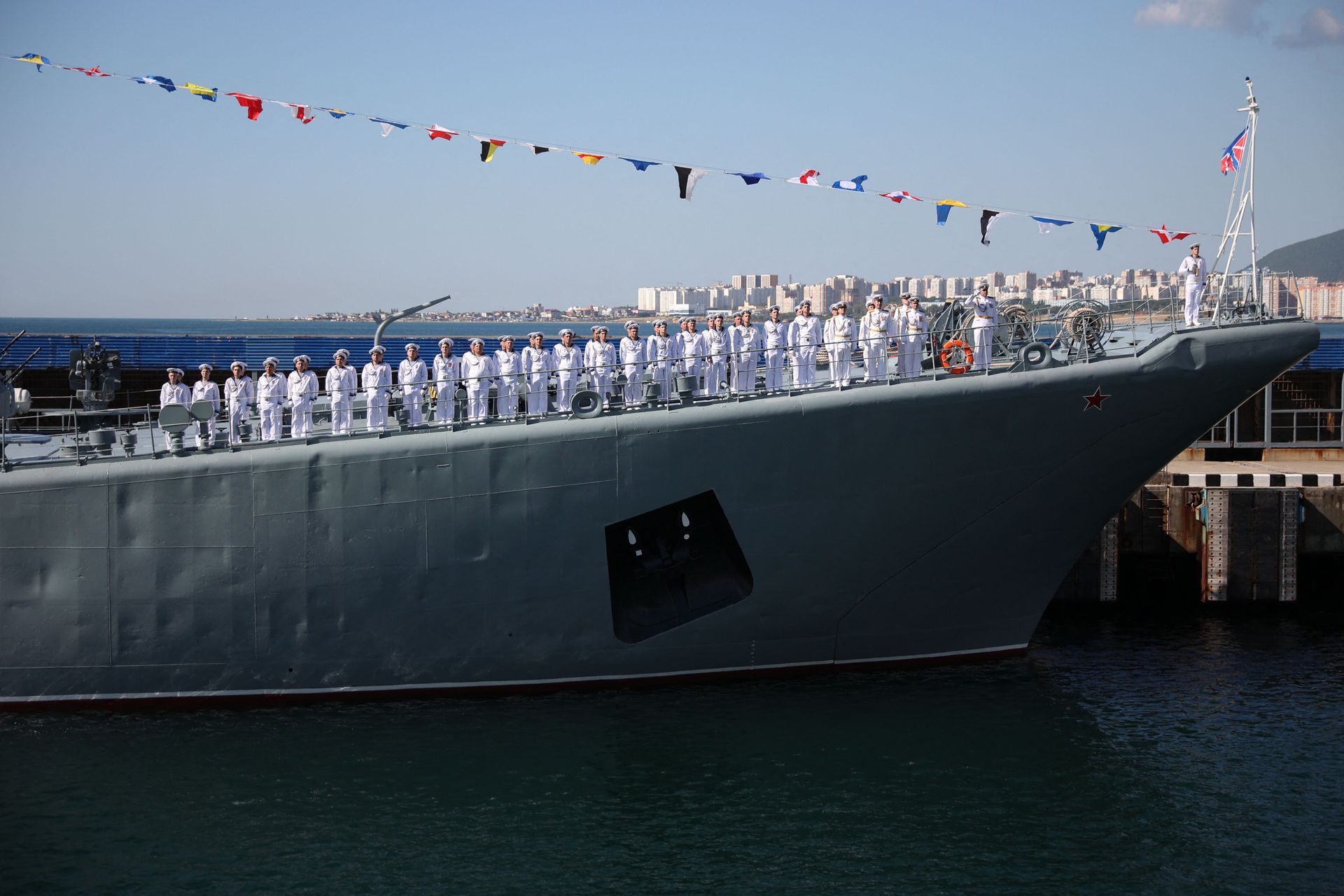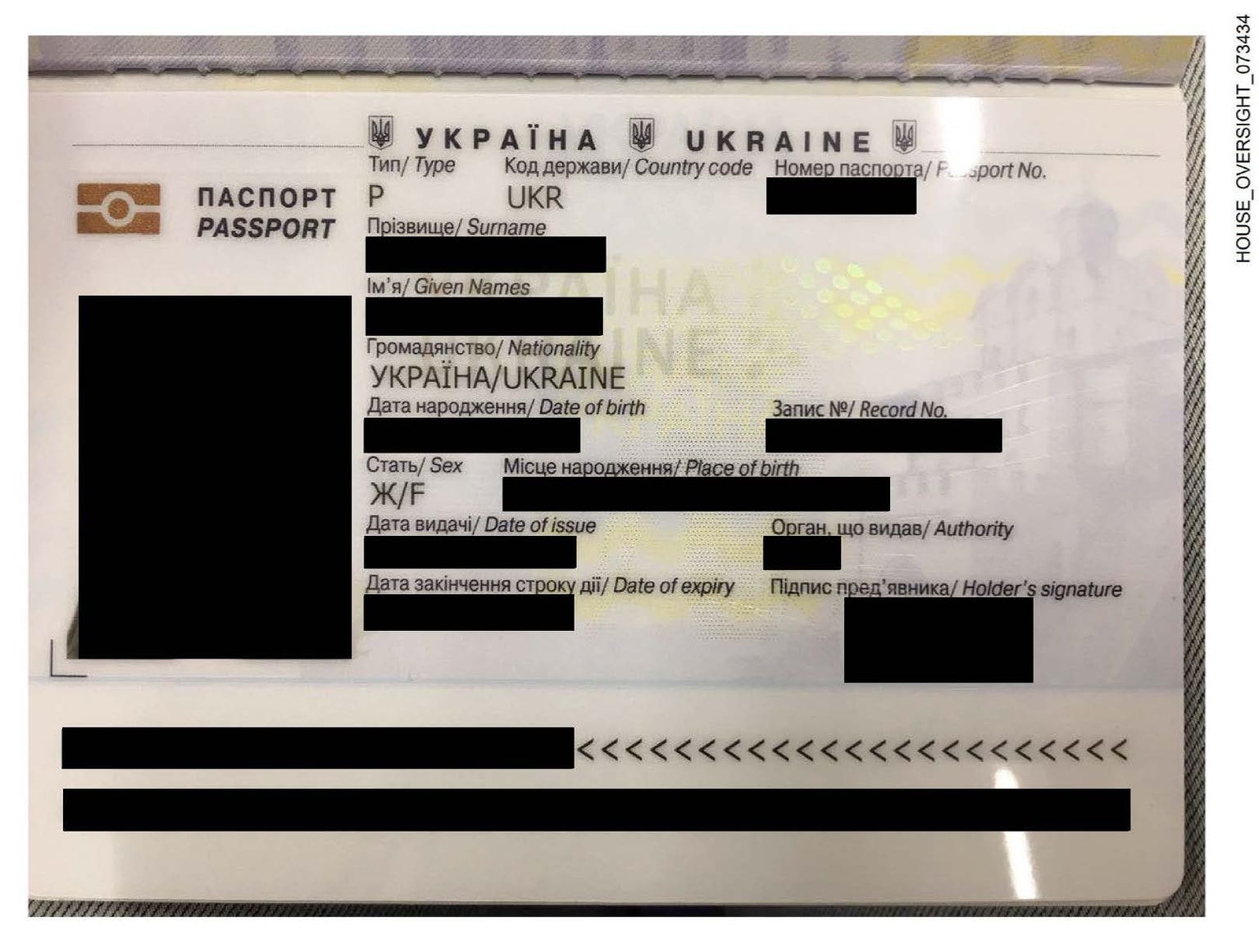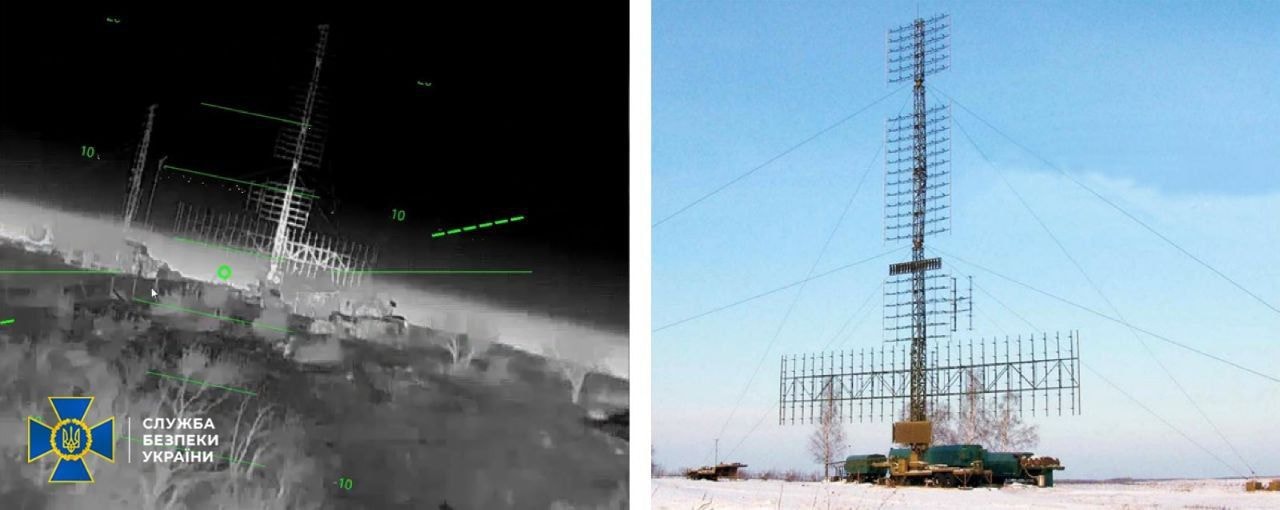SBU reveals next-gen Sea Baby naval drones, confirms use in June Crimea Bridge attack

The Security Service of Ukraine (SBU) has revealed on Oct. 22 the next generation of its Sea Baby naval drones, and confirmed they were used in an attack on the Crimea Bridge earlier this year.
The SBU showed two versions of the drone in a video — the first, equipped with a stabilized machine gun turret featuring an automatic aiming system, and the second, carrying a 10-round Grad multiple launch rocket system.
The upgraded drones can cover distances of over 1,500 kilometers (930 miles), carry up to 2,000 kilograms (4,409 pounds) of cargo, and feature reinforced engines with a modern navigation system, according to the SBU.
According to SBU, these drones were used in "successful missions" in the Black Sea, in particualr the June 3 attack on the Crimean Bridge.
It was the third attack against the bridge since Russia's full-scale war began in 2022.
During this operation, the Sea Baby drones delivered explosives to the targeted site, which were then used to mine and damage the bridge's underwater supports.
"Our drones have changed the balance of power in the Black Sea and proven their effectiveness. The new generation of Sea Baby drones is even more effective," SBU Chief Vasyl Malyuk said.
"Therefore, the work to clear the Black Sea of the Russian fleet will continue. The enemy will feel the full force of our technological developments."
Since unveiling the world's first dedicated naval drone fleet in September 2022, Ukraine has advanced the use of unmanned maritime systems, successfully sinking nearly a dozen Russian vessels.
But Russia is adapting — after a string of devastating Ukrainian strikes that crippled much of its Black Sea Fleet, Russia is now turning to naval drones in a bid to rebuild its presence and adapt to a new phase of maritime warfare.
In May, the Russian Navy began forming specialized regiments to integrate unmanned boats and underwater vehicles across its fleets, according to the Russian state newspaper Izvestia, marking a clear push to modernize its naval capabilities.











